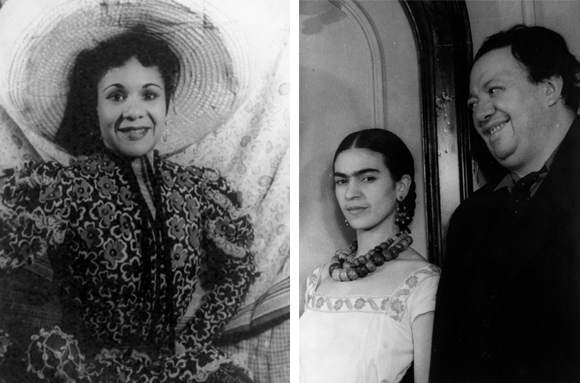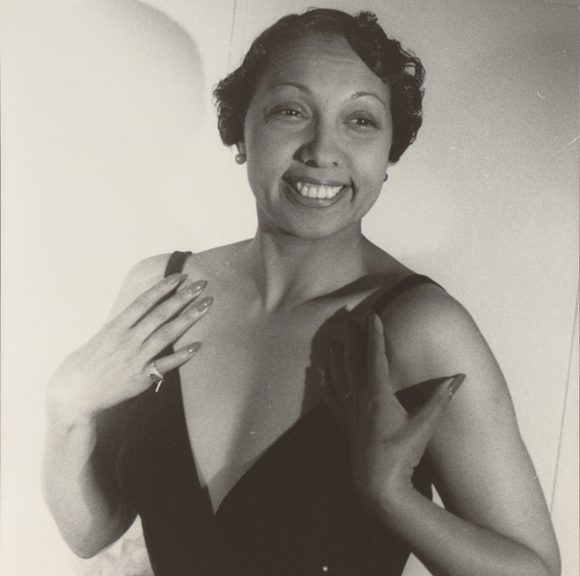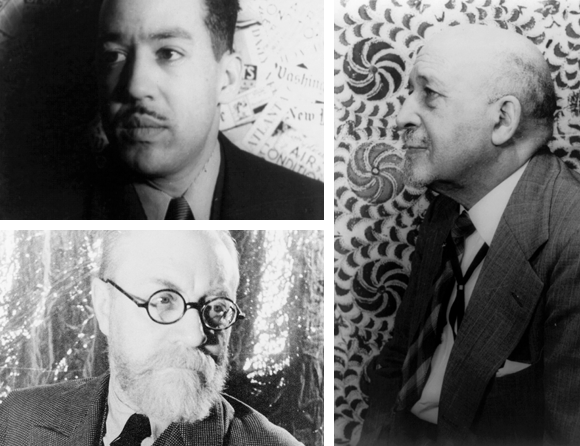
Outliers
Bon viveur
Carl Van Vechten never saw a taboo he wasn’t itching to break.
Susie Allen, AB’09
In his career as an influential writer, critic, photographer, and general sybarite-about-town, Carl Van Vechten, PhB 1903, traversed the boundaries of race, sexuality, class, and taste. In another place or moment, he might have been confined to society’s margins, yet he lived at the center of New York’s glittering cultural scene in the 1920s.
Fifty years after his death, several books have renewed interest in Van Vechten’s complicated legacy—among them, an updated biography by Edward White, The Tastemaker: Carl van Vechten and the Birth of Modern America (Farrar, Straus, and Giroux, 2014).

Van Vechten subjects: Katherine Dunham, PhB’36; Frida Kahlo and Diego Rivera. (Photos courtesy Library of Congress)

Van Vechten gained prominence first as a journalist and music critic, then as a novelist, and finally as a portrait photographer. Today he is also remembered for the social barriers he crossed. Van Vechten maintained homosexual relationships throughout his life, alongside his 50-year marriage to actress Fania Marinoff. He had an enduring fascination with African American culture, and though he worked tirelessly to bring the work of African American writers and musicians to wider audiences, his own views on race were far from progressive. Van Vechten was incapable of living by anyone’s rules except his own. As the protagonist of his 1922 novel Peter Whiffle: His Life and Works argued, “It is necessary to do only … what one is forced by nature to do.”
Born in 1880, Van Vechten was the beloved baby of the family, 16 years younger than his next oldest sibling. He developed an early passion for music and dance after attending shows at Greene’s Opera House, the local theater, and couldn’t wait to escape Cedar Rapids, Iowa. A trip to Chicago for the World’s Columbian Exposition in 1893 made a lasting impression.
In 1899 he enrolled at the University of Chicago, where he became a member of the tony Psi Upsilon fraternity. Van Vechten’s attitude toward his studies was shared by the protagonist of a story he contributed to the University of Chicago Weekly: “His leanings toward the academic were not pronounced.”

Van Vechten subject: Josephine Baker.
(Photo courtesy Library of Congress)

Instead Van Vechten wrote stories, plays, verse, and columns for the Weekly. He took courses with the novelist Robert Herrick, the poet William Vaughn Moody, and the leftist writer and intellectual Robert Morss Lovett. He attended as many concerts as he could, developing a love of Richard Strauss, Richard Wagner, and Antonín Dvorák—the hip composers of his time.
With his fraternity brothers, he frequented the Levee, Chicago’s red-light district. Later in life, he claimed to have worked as a pianist in the Everleigh Club, the infamous brothel patronized by Chicago’s elite. He also visited famous Bronzeville nightclubs like the Dreamland Café and Lincoln Gardens.
After a brief postgraduation stint as a reporter for the Chicago American, Van Vechten came to New York in 1906. He took to the city immediately. “New York, my dear, you would love, with its thousand and one queer places,” he wrote to a childhood friend. At the New York Times he ascended from staff reporter to assistant music critic in only a few months.
The position gave him access to New York’s cultural class. Van Vechten’s social calendar was a who’s who of the 1910s and 1920s. At boozy gatherings all over Manhattan, he rubbed shoulders with H. L. Mencken, Eugene O’Neill, and Gertrude Stein. His letters were peppered with gossipy asides. (“Scott is more or less on the wagon because he is working but he & Zelda have fallen off a couple of times,” Van Vechten wrote to his wife during a trip to Los Angeles.)

Van Vechten subjects (clockwise from top left): Langston Hughes; W. E. B. DuBois; Henri Matisse.
(Photos courtesy Library of Congress)

Van Vechten began to write novels like The Blind Bow-Boy (1923), The Tattooed Countess (1924), and Parties: Scenes from Contemporary New York Life (1930). Infused by the carefree spirit of the age, they were generally well received by critics.
The interest in African American culture that emerged in Chicago grew in New York. Van Vechten appointed himself publicist and ambassador for the Harlem Renaissance; he befriended young Langston Hughes, and the two maintained a lengthy friendship and correspondence. Van Vechten even wrote the introduction to Hughes’s The Weary Blues.
Among African American cultural figures, Van Vechten was regarded warmly by some, suspiciously by others. W. E. B. DuBois was hostile, while Zora Neale Hurston once proclaimed, “If Carl was a people instead of a person, I could then say, these are my people.”
In 1926 he published a tragic love story set in Harlem. The title, a slang term for the highest balcony of a segregated theater, was shocking even in its day and made Van Vechten even more polarizing within the Harlem Renaissance. Some, including Hughes, admired the novel. Others never forgave him for it.
Van Vechten’s ambivalent role in the Harlem Renaissance continues to challenge scholars. “Explicitly and implicitly, Carl Van Vechten has come to symbolize an anxiety about the insidious and undermining nature of white influence on black cultural integrity, which has been a central theme throughout the evolution of black life in the United States,” writes Van Vechten scholar Emily Bernard.
As the glamour of the 1920s gave way to the Depression, Van Vechten put writing aside in favor of photography. In his New York studio, he took portraits of famous friends: Aaron Copland, Salvador Dalí, Eartha Kitt, Georgia O’Keeffe, Diego Rivera, Paul Robeson, Bessie Smith, Alfred Stieglitz, Anna May Wong. He never sold his iconic images, offering them as gifts instead.
In the 1940s and 1950s, Van Vechten retreated from public life. He busied himself as Gertrude Stein’s literary executor, overseeing the publication of unreleased works. He assembled a remarkable collection of personal letters and ephemera related to African American culture and donated them to Yale. He named the collection for his friend James Weldon Johnson, an African American writer and activist.
Toward the end of his life, Van Vechten feared his own artistic legacy was not as secure as those of his peers. But like his protagonist Peter Whiffle, Van Vechten’s legacy was his life as much as his work: “I wanted to write a new Comédie Humaine,” Whiffle says. “Instead, I have lived it.”
